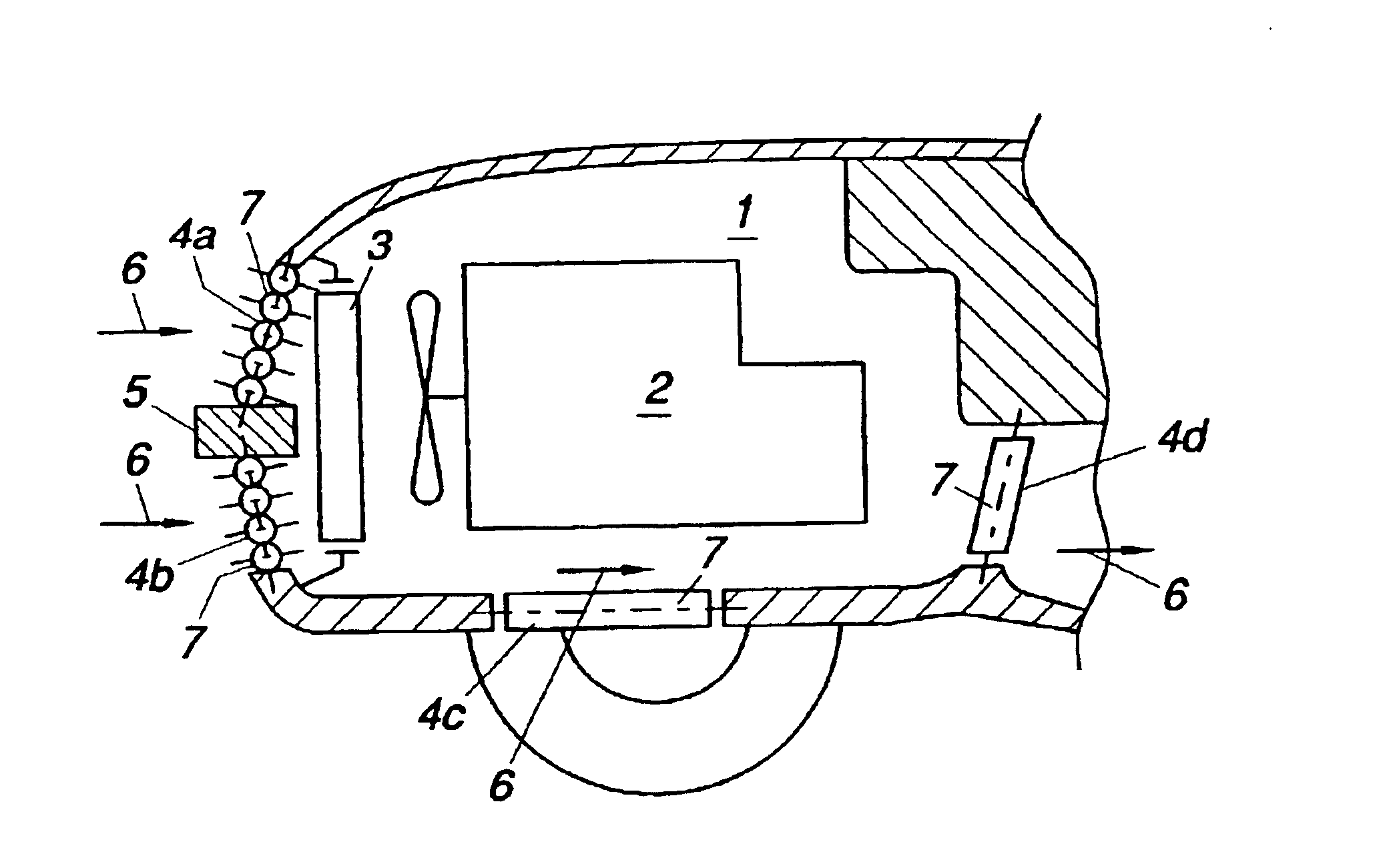Shutter for closing openings with pivotal shutter elements
a shutter element and shutter technology, applied in the direction of wing accessories, transportation and packaging, propulsion parts, etc., can solve the problems of inability to efficiently minimize cooling losses by thermal conduction or radiation, difficult to achieve a reliable seal therewith, and additional losses caused by thermal conduction and radiation
- Summary
- Abstract
- Description
- Claims
- Application Information
AI Technical Summary
Benefits of technology
Problems solved by technology
Method used
Image
Examples
Embodiment Construction
FIGS. 1 and 2 illustrate a detail of the engine compartment 1 of a vehicle that is not shown in detail herein and that accommodates an internal combustion engine 2, both showing possible examples of how to arrange the shutters of the invention. Air is flown through the radiator 3 of the internal combustion engine 2 via first and second openings 4a, 4b arranged above or underneath a bumper 5. Outgoing air leaves the engine compartment through opening 4d. The respective ones of the openings 4c (FIG. 1) and 4c and 4c′ (FIG. 2) may represent cross-sections for both incoming and outgoing air.
In FIG. 1, the clear cross-sections of the two incoming air openings 4a and 4b may be regulated by means of a shutter provided with shutter elements 7 that are oriented horizontally transversely to the direction of flow (arrows 6). The same applies for the openings 4c and 4d (the opening 4d at least constituting an opening for outgoing air) except that here, the shutter elements 7 or the slats of the...
PUM
 Login to View More
Login to View More Abstract
Description
Claims
Application Information
 Login to View More
Login to View More - R&D
- Intellectual Property
- Life Sciences
- Materials
- Tech Scout
- Unparalleled Data Quality
- Higher Quality Content
- 60% Fewer Hallucinations
Browse by: Latest US Patents, China's latest patents, Technical Efficacy Thesaurus, Application Domain, Technology Topic, Popular Technical Reports.
© 2025 PatSnap. All rights reserved.Legal|Privacy policy|Modern Slavery Act Transparency Statement|Sitemap|About US| Contact US: help@patsnap.com



